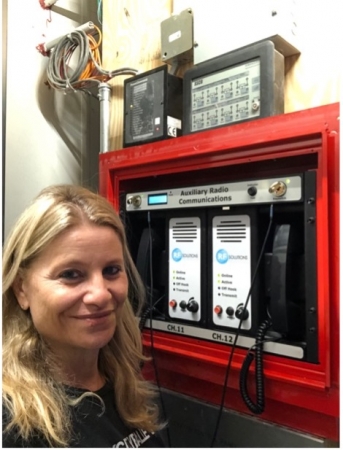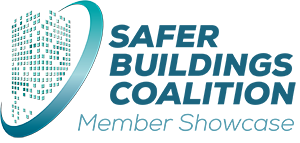
Grid testing emergency responder radio communication systems is mandated in the International Fire Code 510.5.3 to ensure adequate signal coverage throughout a building, including areas not typically prioritized for cellular coverage, like stairwells, escape routes, cellars, mechanical floors, and rooftops. Once a system is installed, the building owner must have the radio system tested to verify that two-way coverage on each building floor is not less than 95%, or 100% in critical areas. Grid testing isn’t complicated. Each floor of the building is divided into a grid of 20 approximately equal test areas. Two technicians are required. One stands at the control center, and the other moves throughout the building to stand in each of the 20 grids on each of the floors. The test is conducted using a calibrated portable radio of the latest brand and model used by the AHJ (Authority Having Jurisdiction). In some jurisdictions, like NYC, we must record each grid test’s audio and submit each of these files to the FDNY for review and acceptance.
Sounds simple, and it is. What doesn’t come across in the description is the absolute tediousness of the process. The tech exchange goes something like this:
Tech 1 (on the 25th floor): “Floor 25 Grid 1 Area 10 Channel 11.”
Tech 2 (at the command center): “Floor 25 Grid 1 Area 10 Channel 11 DAQ 4.5.”
Tech 1: “Floor 25 Grid 1 Area 10 Channel 12.”
Tech 2: “Floor 25 Grid 1 Area 10 Channel 12 DAQ 4.5.”
DAQ, or delivered audio quality, is the most common signal quality measure for public safety systems. Although the minimum DAQ code requirement is 3.0, the accepted objective is to provide DAQ 3.4 over the entire service area. DAQ 3.4 is defined as speech understandable with repetition only rarely required and with some noise and/or distortion. A lower DAQ may require excessive speech repetition, while a higher value may require a prohibitively expensive infrastructure investment.
The back-and-forth exchange between the two techs can take over a week of 8-hour days, depending on the size of the building. The techs require laser focus to ensure the system works in every nook and corner. Our techs know their work is critical, no matter how tedious, because first responders depend on it. Any deficiencies in coverage are identified and will require remediation, or the system will not receive approval. Delays in approval can hinder the acquisition and maintenance of occupancy permits. Mandatory yearly inspections can uncover degradation or impairment that is not yet severe enough to trigger system alarms. This deterioration could result from partial equipment failure, damage to antennas or cabling, or changes and renovations within the building. Proper testing takes time and costs money, but these systems rely on it, as do the first responders who use them to save lives. You may have heard of Malcolm Gladwell’s theory that “ten thousand hours is the magic number of greatness.” To be considered elite and truly experienced within a particular craft, you must practice it for ten thousand hours. If that’s the case, our grid testing technicians set the gold standard.
